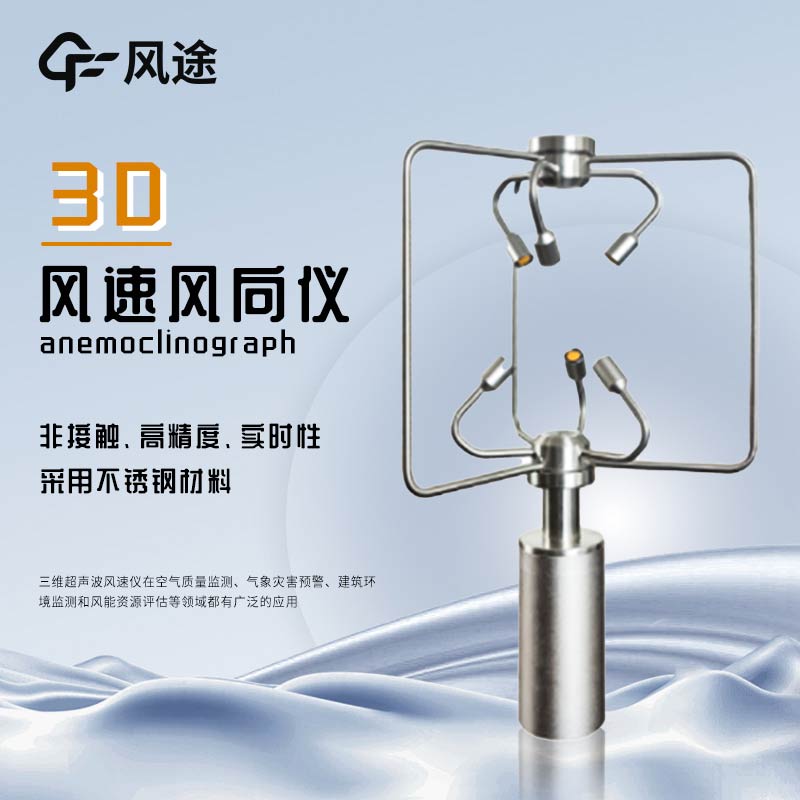Shandong Fengtu IOT Technology Co., Ltd
Sales Manager:Ms. Emily Wang
Cel,Whatsapp,Wechat:+86 15898932201
Email:info@fengtutec.com
Add:No. 155 Optoelectronic Industry Accelerator, Gaoxin District, Weifang, Shandong, China

Sales Manager:Ms. Emily Wang
Cel,Whatsapp,Wechat:+86 15898932201
Email:info@fengtutec.com
Add:No. 155 Optoelectronic Industry Accelerator, Gaoxin District, Weifang, Shandong, China
time:2024-09-06 08:59:22 source:Weather Station viewed:523 time
Wind is a phenomenon of air movement in the atmosphere, and its speed and direction are influenced by a variety of factors, including topography, climate, and seasons. A wind rose is a type of chart used to represent the distribution of wind direction and speed; it shows the frequency and intensity of the wind in specific periods through sectors in different directions. In a wind rose, each sector represents a specific wind direction, and the size or color depth of the sector usually indicates the frequency or speed of the wind in that direction. In fact, in addition to horizontal wind, there is also vertical wind speed, which is the upward or downward airflow. This vertical wind speed has a significant impact on weather patterns, climate systems, and flight safety. For example, pilots need to pay special attention to vertical wind speed during takeoff and landing because it can affect the stability and controllability of the aircraft.
Traditional mechanical anemometers measure wind speed by the rotation of wind cups, but this method usually only measures horizontal wind speed and cannot measure vertical wind speed.
In contrast, Ultrasonic Anemometers measure wind speed and direction by emitting and receiving ultrasonic pulses. The propagation speed of ultrasonic waves in the air is affected by wind speed. By comparing the time or frequency difference between the emitted and received ultrasonic pulses, ultrasonic anemometers can accurately calculate wind speed and direction, including vertical wind speed.
Most Ultrasonic Anemometers can only measure horizontal wind, that is, the direction and speed of the wind near the ground. However, some special instruments, such as the 3D Anemometer launched by Fengtu, can measure wind speed in the vertical direction, that is, the situation where the wind blows up or down. It helps users to understand the dynamics of the wind more comprehensively and can be used in industries such as weather forecasting and wind energy utilization.
The 3D Anemometer measures the vertical wind speed by adding extra ultrasonic transducers and uses vector synthesis and spatial transformation to calculate the three-dimensional velocity and direction of the wind. It is suitable for building turbulence monitoring, bridge health monitoring, power grid turbulence monitoring, carbon emission monitoring systems, and open-path eddy covariance system monitoring.

Small weather station configuration listWindway Technology is the source manufacturer of small weather stations, whose configuration list is shown below.Miniature weather sensorSolar panelIP66 protective box (with LCD screen inside)2m vertical poleGround cageCloud platformUpper computer, Android APP...
In wind farm operations, it is essential to collect wind speed and direction data. This is because wind speed directly determines the output power of wind turbines (power is proportional to the cube of wind speed). By using real-time wind speed data, combined with the turbine's power curve (the...
In ancient times, without modern technology, it was very difficult for people to predict weather changes. But our ancestors demonstrated their wisdom by observing the sky and animal behaviour to predict the weather. Nowadays, with the advancement of technology, we have advanced weather detection ins...
The key to measuring liquid level by radar level meter is to choose the right antenna. There are 3 types of commonly used non-contact radar level meter antennas: flared, parabolic and planar antennas. Horn antenna transmits spherical wave through point source, which is suitable for liquid level meas...